Are you waiting until you have ‘enough money’ to launch that product, write that book or set up your not for profit? Do you need capital to develop an idea or create a business or product?
Perhaps you already have everything you need to breathe life into your vision….
Enter crowdfunding and the infinite possibilities it has created. All you actually need is a laptop and some adoring fans to collectively chip in toward your business idea.
 Crowdfunding is a funding model that utilises online platforms to raise capital from a large pool of individuals. By unlocking alternative financing for small businesses and start-ups, crowdfunding has allowed hundreds of thousands of businesses and products to come into form since 2009.
Crowdfunding is a funding model that utilises online platforms to raise capital from a large pool of individuals. By unlocking alternative financing for small businesses and start-ups, crowdfunding has allowed hundreds of thousands of businesses and products to come into form since 2009.
According to recent research the crowdfunding movement is valued at around $1.41 billion globally and expected to reach $3.62 billion by 2030.
“The funding model spreads risk, enables innovative projects and democratises investment, allowing individuals to support causes that they care about.”
Crowdfunding emerged fifteen years ago as a new economic model following the global financial crisis. Initially it was used to support charities and disaster relief populations through the collective effort of individuals networking and pooling their money. It has blossomed into a means to support anything and everything requiring money.
Crowdfunding offers an alternative funding option for small start-ups and product launches and is essentially the collective effort of a large group of individuals who contribute small amounts of capital to finance a proposal. Each campaign has a funding goal within a fixed timeframe and success of each launch depends on raising the target funds by the deadline.
Crowdfunding websites such as Kickstarter and Pozible allow you to connect with like-minded people and either seek out existing projects to support and back or share your own to the community. This new model of financing puts the power pack into the hands of the consumer. Only projects that reach their target actually receive the funding which has been pledged. Even if a project is $5 shy of reaching its goal at the end of its campaign, if it doesn’t reach its target, the campaign ends, and no money changes hands. Only the most popular products and ideas get backed.
 Not only do crowdfunding platforms empower individuals to pursue their entrepreneurial ambitions, but they also invite collaboration and introduce investment opportunities to a whole new market. While many young people wouldn’t consider investing on the stock market, they may consider contributing to the development of a new app or invention via a crowdfunding platform. These opportunities can often lead to these 'low risk’ investors becoming shareholders of winning designs, ventures, and enterprises.
Not only do crowdfunding platforms empower individuals to pursue their entrepreneurial ambitions, but they also invite collaboration and introduce investment opportunities to a whole new market. While many young people wouldn’t consider investing on the stock market, they may consider contributing to the development of a new app or invention via a crowdfunding platform. These opportunities can often lead to these 'low risk’ investors becoming shareholders of winning designs, ventures, and enterprises.
When you invest or back a project you will usually have a choice as to how much you pay. It is usually tiered with higher pledged amounts resulting in more exclusive inclusions or access to limited edition variants. For example, a musician might offer a downloadable file of their latest song to the lowest tier backers, a physical CD or record to the mid-tier backers and a signed t-shirt or VIP ticket to their tour to top investors.
Creatives and entrepreneurs require strong organisation skills and the ability to demonstrate the viability of their project in order to gain sufficient pledges and support. Groundbreaking, popular ideas are most likely to be funded. Crowdfunding communities will only invest in ideas they actually want to see manifest. In order to make sure your project reaches its funding goal you need to define you project clearly, demonstrating you have a strong vision and attainable goals. Sharing action steps and a timeline with your potential pledgers is also helpful for investors to see how your project will evolve from idea to reality.

Some entrepreneurs will use these platforms as a testing ground to gauge viability and interest in a potential offering before investing money of their own. Other benefits of leaning on the social economy for launches includes generating interest and publicity for a product or venture before it gets funded. Demonstrating social proof via these platforms is measurable and a helpful tool when looking to get distributors, publishers and other high-level investors involved.
There are risks involved in sharing your unique idea on a public, international platform too. You risk having someone else steal your idea, so it counts to have a strategy about how you reveal your plans step by step to attract investors while still keeping some details close to your chest.
Crowdfunding represents a real paradigm shift within our social economy. One which is based on more than the exchange of money for an existing service or product. An organic customer base is directly engaged with promises of something brand new. The audience is involved from inception to launch, allowing them to become a part of the brand story as they are enticed with rewards for their loyalty and faith in the end vision. It’s a far cry from traditional commerce models and one that encourages innovation and design excellence, an arena often short on funding due to potential higher risks. But this model offers low risk to investors and potentially very high satisfaction.
Crowdfunding has a potential future as a vehicle for good if investors choose to only back products and ventures which demonstrate positive social impact and or low environmental impact. If consumers get to decide what makes the cut, it’s ultimately an empowering and exiting responsibility which could actually lead to design brilliance, innovation and creations that make the world a better place. Now that’s something worth backing.
Alison Gallagher is a freelance writer, resourcefulness expert and entrepreneur. She has been featured in various publications including Stellar Magazine, Australian Health and Fitness Magazine, and Cleo Magazine. Alison is particularly passionate about sharing practical tips on how to live simply, sustainably and seasonally.






